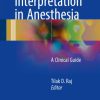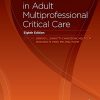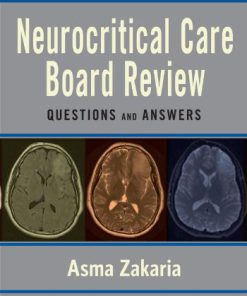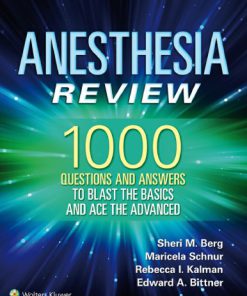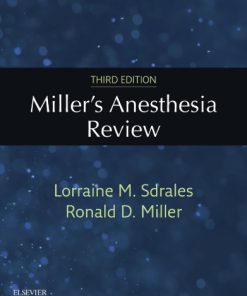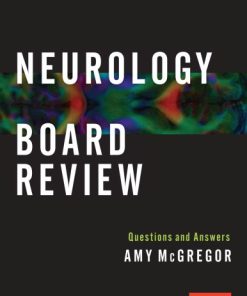Essential Clinical Anesthesia Review Keywords Questions and Answers for the Boards 1st Edition Linda S. Aglio
$50.00 Original price was: $50.00.$25.00Current price is: $25.00.
This completed downloadable of Essential Clinical Anesthesia Review Keywords Questions and Answers for the Boards 1st Edition Linda S. Aglio.
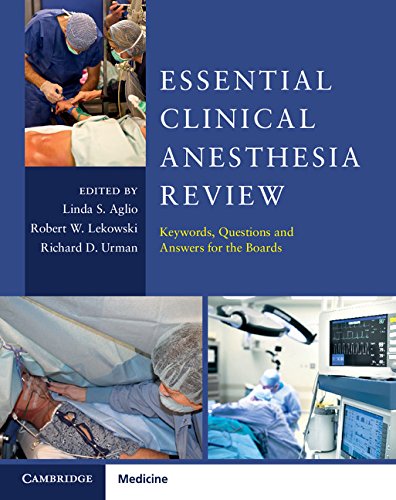
Instant downloaded Essential Clinical Anesthesia Review Keywords Questions and Answers for the Boards 1st Edition Linda S. Aglio pdf docx epub after payment.
Product details:
- ISBN-10 : 1316055183
- ISBN-13 : 9781316055182
- Author : Linda S. Aglio
Table of contents:
Section 1 Preoperative care and evaluation
1. Preoperative anesthetic assessment
2. Obstructive and restrictive lung disease
3. Anesthetic goals in patients with myocardial ischemia and heart failure
4. Anesthetic goals in patients with valvular heart disease
5. Obesity
6. Chronic renal failure
7. Liver disease
8. Principles of diabetes mellitus and perioperative glucose control
9. Common blood disorders
10. The elderly patient
11. Neurologic diseases and anesthesia
12. Anesthetic considerations in psychiatric disease
13. Substance abuse and anesthesia
Section 2 Airway management
14. Anatomy of the human airway
15. Airway assessment
16. Perioperative airway management
17. Management of the difficult airway
Section 3 Anesthesia equipment
18. Medical gas supply, vacuum, and scavenging
19. Anesthesia machine
20. Anesthesia ventilators
21. Anesthesia breathing apparatuses
22. Electrical safety
Section 4 Patient monitoring
23. Hemodynamic patient monitoring
24. The electrocardiogram and approach to diagnosis of common abnormalities
25. Pulse oximetry and capnography
26. Monitoring of neuromuscular blockade
27. Thermoregulation and temperature monitoring
28. Neurophysiologic monitoring
29. Intraoperative awareness
Section 5 Inhalation anesthetics
30. Inhalation anesthetics
31. Pharmacokinetics of inhalation agents
32. Pharmacodynamics of inhalation agents
Section 6 Intravenous anesthetics and adjunct drugs
33. Intravenous induction agents
34. Mechanisms of anesthetic actions
35. Pharmacokinetics of intravenous agents
36. Opioids
37. Muscle relaxants
38. Reversal of neuromuscular blockade
39. Perioperative pulmonary aspiration prophylaxis
40. Perioperative antiemetic therapies
41. COX inhibitors and alpha2-adrenergic agonists
42. Diuretics
43. Drug interactions
44. Allergic reactions
Section 7 Pharmacology of local anesthetics
45. Pharmacology of local anesthetics: mechanism of action and pharmacokinetics
46. Clinical applications of local anesthetics
Section 8 Anesthetic techniques
47. Administration of general anesthesia
48. Total intravenous anesthesia
49. Monitored anesthesia care
50. Patient positioning and common nerve injuries
Section 9 Managing the transition from anesthesia
51. Emergence from anesthesia
52. Postoperative complications in the post-anesthesia care unit
53. Management of postoperative nausea and vomiting
54. Cognitive changes after surgery and anesthesia
Section 10 Regional anesthesia
55. Anatomy of the vertebral column and spinal cord
56. Spinal anesthesia
57. Epidural anesthesia
58. Principles of ultrasound-guided nerve blocks
59. Upper extremity nerve blocks
60. Lower extremity nerve blocks
Section 11 Fluid and electrolyte balance
61. Fluid replacement
62. Acid–base balance in anesthesia and intensive care medicine
63. Ion balance
64. Total parenteral nutrition
Section 12 Transfusion medicine
65. Blood products
66. Blood transfusion
67. Massive transfusion
68. Normovolemic hemodilution, perioperative blood salvage, and autologous blood donation
Section 13 Cardiac anesthesia
69. Cardiac physiology
70. Cardiovascular pharmacology
71. Adjunct cardiovascular drugs
72. Coronary artery bypass grafting utilizing cardiopulmonary bypass
73. Off-pump coronary artery bypass
74. Transesophageal echocardiography
75. Pacemakers and automated implantable cardioverter-defibrillators
76. Ventricular assist devices
77. Anesthetic considerations for surgical repair of the thoracic aorta
78. Cardiac transplantation in the adult
79. Persistent postoperative bleeding in cardiac surgical patients
Section 14 Vascular anesthesia
80. Carotid endarterectomy
81. Abdominal aortic aneurysm
82. Endovascular abdominal aortic aneurysm repair
83. Peripheral vascular disease
Section 15 Thoracic anesthesia
84. Respiratory physiology
85. Oxygen and carbon dioxide transport
86. Lung isolation techniques
87. Anesthetic management for pulmonary resection
88. Lung transplantation for end-stage lung disease
89. Bronchoscopy and mediastinoscopy: anesthetic implications
90. Management of mediastinal mass
Section 16 Neuroanesthesia
91. Principles of neurophysiology
92. Cerebral protection
93. Craniotomy
94. Cerebrovascular diseases
95. Anesthesia for electroconvulsive therapy
Section 17 Anesthesia for renal and urinary tract diseases
96. Renal physiology
97. Urology
98. Kidney and pancreas transplantation
Section 18 Anesthesia for general surgical procedures
99. Anesthesia for intra-abdominal surgery
100. Principles of laparoscopic surgery
101. Principles of anesthesia for esophageal and gastric surgery
102. Principles of anesthesia for breast and gynecologic surgery
103. Anesthesia for liver transplantation
Section 19 Anesthesia for endocrine diseases
104. Thyroid disorders
105. Parathyroid disorders
106. Pheochromocytoma and carcinoid tumors
107. Syndrome of inappropriate antidiuretic hormone, diabetes insipidus, and transsphenoidal pituitary surgery
108. Disorders of the adrenal cortex
Section 20 Anesthesia for neuromuscular and collagen disease
109. Malignant hyperthermia
110. Myasthenia gravis
111. Muscular dystrophy and myotonic dystrophy
Section 21 Anesthesia for ocular, ear, and throat diseases
112. Ophthalmic procedures
113. Common otolaryngology procedures
114. Lasers, airway surgery, and operating room fires
Section 22 Anesthesia for orthopedic and trauma surgery
115. Anesthesia for common orthopedic procedures
116. Rheumatoid arthritis and scoliosis
117. Anesthetic management in spine surgery
118. Anesthesia for trauma
Section 23 Obstetric anesthesia
119. Physiologic changes during pregnancy
120. Analgesia for labor
121. Anesthesia for cesarean delivery
122. Obstetric hemorrhage
123. Preeclampsia
124. Pregnant patients with comorbid diseases
125. Anesthesia for fetal intervention
Section 24 Pediatric anesthesia
126. Basic considerations for pediatric anesthesia
127. Preoperative evaluation of the pediatric patient and coexisting diseases
128. Anesthetic considerations for common procedures in children
129. Neonatal surgical emergencies
130. Congenital heart disease
131. Management of postoperative pain in children
132. Neonatal resuscitation: clinical and practical considerations
Section 25 Ambulatory and remote location anesthesia
133. Introduction to ambulatory anesthesia
134. Anesthesia outside the operating room
135. Office-based anesthesia
Section 26 Management aspects of anesthesia practice
136. Patient safety, quality assurance, and risk management
137. Operating room management: core principles
138. Practice management
139. Principles of medical ethics
140. Risks in the operating room
141. Statistics for anesthesiologists and researchers
Section 27 Pain management
142. Neurophysiology of pain
143. Postoperative acute pain management
144. Multidisciplinary approach to chronic pain management
145. Psychological evaluation and management of patients with chronic pain
146. Interventional pain management I: Epidural, sympathetic, and neural blockade procedures
147. Interventional pain management II: Implantable and other invasive therapies
148. Complications associated with interventions in pain medicine
149. Back pain
150. Complex regional pain syndrome
151. Cancer pain
Section 28 Intensive care unit
152. Cardiopulmonary resuscitation
153. Multiorgan failure and its prevention
154. Supraventricular arrhythmias
155. Cardiac failure in the intensive care unit
156. Sedation in the surgical intensive care unit
157. Weaning from mechanical ventilation
158. Acute lung injury and acute respiratory distress syndrome
159. Nosocomial infections
160. Septic shock and sepsis syndromes
161. Anesthetic management of the brain-dead organ donor
162. Principles of trauma management
163. Venous thromboembolic disease in the critically ill patient
164. Traumatic brain injury
165. Burn management
166. Common ethical issues in the intensive care unit
Section 29 Special topics
167. Bronchopleural fistula
168. Inhaled nitric oxide
169. Skin and collagen disorders
170. Anesthesia for aesthetic surgery
171. Intra-abdominal hypertension and abdominal compartment syndrome
172. Carbon monoxide and cyanide poisoning
173. Chemical and biologic warfare agents: an introduction for anesthesiologists
174. Anesthesia for robotic surgery
175. Human immunodeficiency virus, methicillin-resistant Staphylococcus aureus, and vancomycin-resistant Enterococcus
176. Alternative medicines and anesthesia
177. Anesthesia in high altitudes
178. Medical informatics and information management systems in anesthesia
179. Hypertrophic cardiomyopathy and prolonged QT interval
People also search:
what are essential documents in clinical trials
what are clinical grade essential oils
what are the clinical findings of essential thrombocythemia
are essential oils medically proven
can essential oils clog pores
You may also like…
Uncategorized
Education Studies & Teaching - School Education & Teaching
Relationships & Lifestyle - Psychological Self-Help
Setting Up and Running a Therapy Business: Essential Questions and Answers 2nd Edition James Rye
Medicine
Miller’s Anesthesia Review 3rd edition by Lorraine Sdrales, Ronald Miller 0323511821 9780323511827
Religion & Spirituality - Christianity
Business & Economics - Human Resources
Ace the Programming Interview 160 Questions and Answers for Success 1st Edition Edward Guiness


